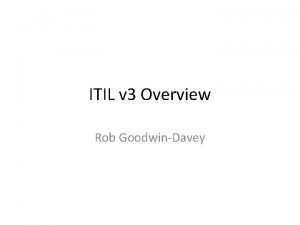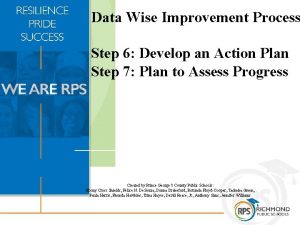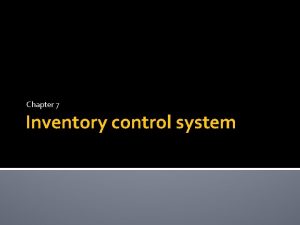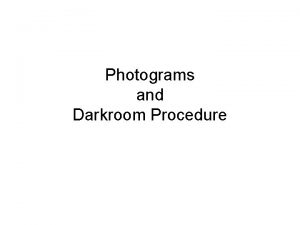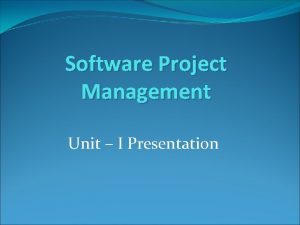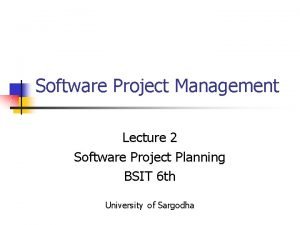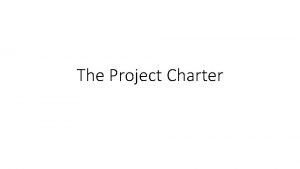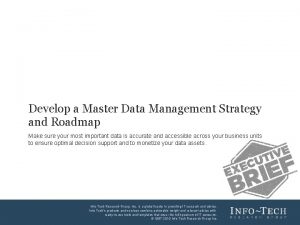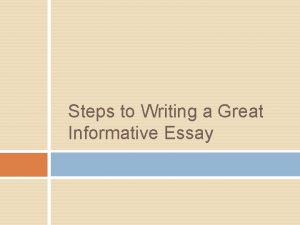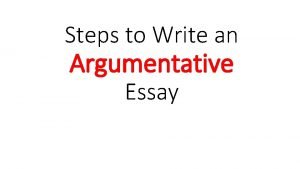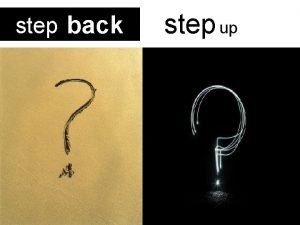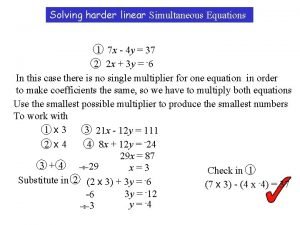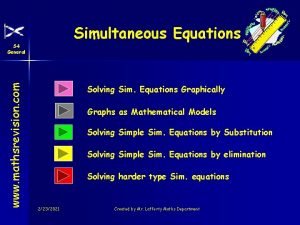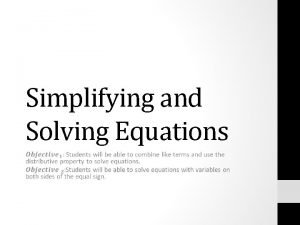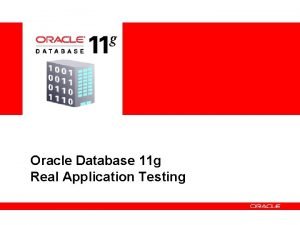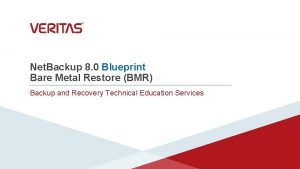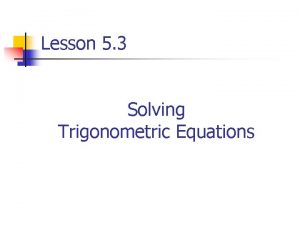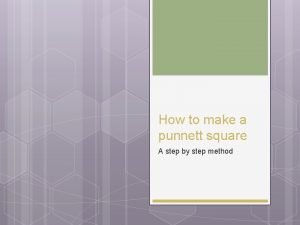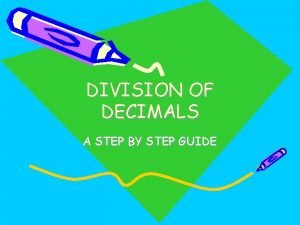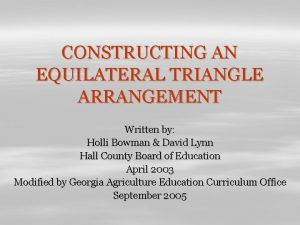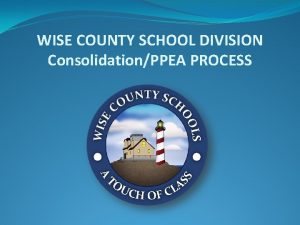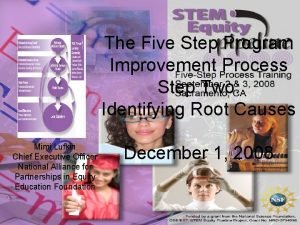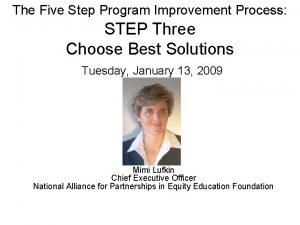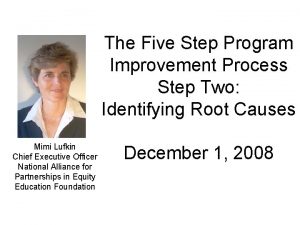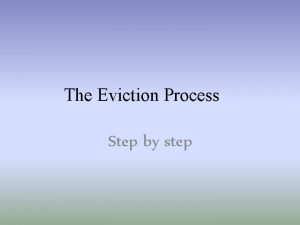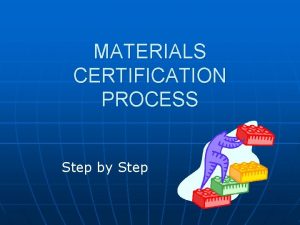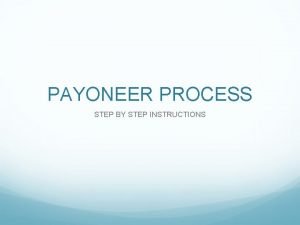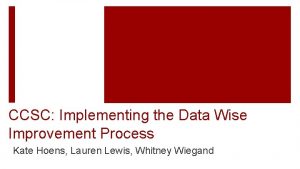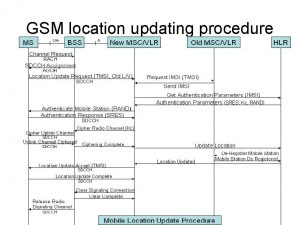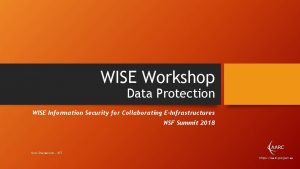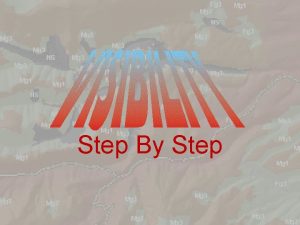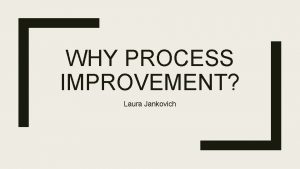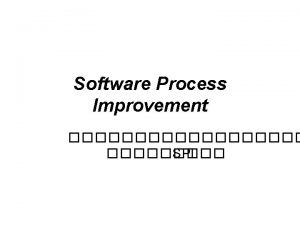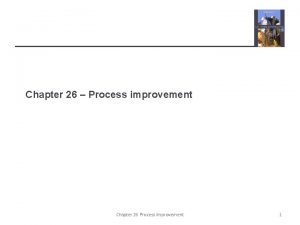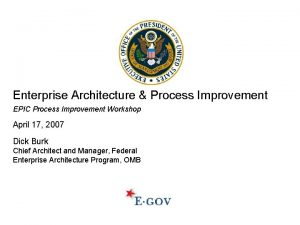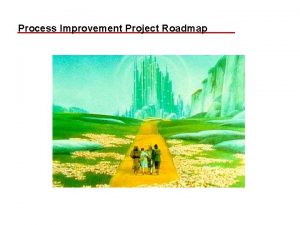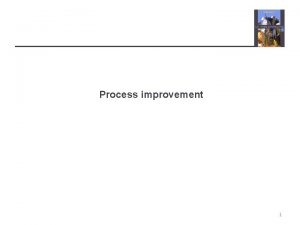Data Wise Improvement Process Step 6 Develop an




































- Slides: 36

Data Wise Improvement Process Step 6: Develop an Action Plan Step 7: Plan to Assess Progress Created by Prince George’s County Public Schools: Ebony Cross Shields, Felice N. De. Souza, Donna Drakeford, Rotunda Floyd-Cooper, Tasheka Green, Paula Harris, Rhonda Hawkins, Trina Hayes, David Rease, Jr. , Anthony Sims, Jennifer Williams

Essential Question – A focus on the Core • How can administrators leverage culture, data, and performance with a lens on literacy to enhance instructional • leadership practices in order to impact • the instructional core?

OBJECTIVE By the end of the session participants will… ○ know what it means to act by developing an action plan, planning to assess progress, and acting and assessing

Data Wise Norms 1. Take an inquiry stance 2. Assume positive intentions 3. Ground statements in evidence 4. Stick to protocol and ensure all voices are heard 5. Be here now 6. Start and end on time

Check-In What experience have you had with the ACE Habits of Mind while engaging in the work of improvement?

Agenda Step 6 Step 7 Step 8 7

Agenda 8

Steps 6&7: The Data Wise Bridge Steps

Step 6: Develop an Action Plan focus area □Relates to instruction. □ Narrows scope of inquiry while remaining broad enough to be relevant to many/most staff members. priority question □Arises from a collaborative process. □ Relates to instruction. □ Further narrows scope of inquiry. □ Is actionable. □ Is genuinely intriguing to staff. learner-centered problem □ Is directly related to Priority Question. □ Is based on multiple data sources. □ Is within our control. □ Is a statement, not a question. □ Is specific and small. problem of practice □ Is directly related to Priority Question. □ Is based on multiple data sources. □ Is within our control. □ Is a statement, not a question. □ Is specific and small. action plan □ States specifically what teachers will do to address the problem of practice. □ Contains one or more research-based, evidence –based, high-leverage instructional strategies. □ Assigns responsibility to specific people. □ Is time-bound. plan to assess progress □Clarifies evidence that would show whether action plan is addressed the learner-centered problem. □Includes short-term, medium-term, and long-term data sources. □ Includes specific and measurable student learning goals.

Through-line focus area □ Relates to instruction. □ Narrows scope of inquiry while remaining broad enough to be relevant to many/most staff members. priority question □ Arises from a collaborative process. □ Relates to instruction. □ Further narrows scope of inquiry. □ Is actionable. □ Is genuinely intriguing to staff. learner-centered problem □ Is directly related to Priority Question. □ Is based on multiple data sources. □ Is within our control. □ Is a statement, not a question. □ Is specific and small. problem of practice □ Is directly related to Priority Question. □ Is based on multiple data sources. □ Is within our control. □ Is a statement, not a question. □ Is specific and small. Insert Focus Area What are our students struggling with when completing open ended assignments/tasks? Our students struggle with understanding what the question is asking and applying knowledge when asked to complete multiple steps. As teachers we are not balancing level 1 questions/tasks with higher level questions/tasks because we focus primarily on the skills required which means students don’t get a chance to struggle with higher order questions/tasks Insert a link to your action plan here action plan □ States specifically what teachers will do to address the problem of practice. □ Contains one or more research-based, evidence – based, high-leverage instructional strategies. □ Assigns responsibility to specific people. □ Is time-bound. plan to assess progress Insert a link to your plan to assess progress here □ Clarifies evidence that would show whether action plan is addressed the learner-centered problem. □ Includes short-term, medium-term, and long-term data sources. □ Includes specific and measurable student learning goals. .

Step 6: Develop an Action Plan Key Tasks Problem of Practice ● 6. 1 Decide on instructional strategies Action Plan ● 6. 2 Agree on what the plan will look like in classrooms ● 6. 3 Put the plan in writing

Step 6: Develop an Action Plan ● commitment (verbal and written) to a strategy for instructional improvement ● increase the clarity and transparency of the work ● create a process through which team members can raise and address different understandings ● translate what is learned through analyzing a broad swath of data into concrete strategies for improving what is happening in classrooms

Step 6: Work of Developing an Action Plan

Step 6: Our Evidence Problem of Practice As teachers, we do not demonstrate sufficient content knowledge and lack proficiency in modeling thinking for students when attempting to respond to tasks. Feasibility and Impact Template (reference p. 140 of Data Wise) Strategy Impact (Low, Med, High) Feasibility (Low, Med, High) Impact High impact instructional strategies are those that, because of their intensity or the number, make the biggest difference in what children learn. Feasibility Depends upon teachers’ existing skills and capacities as a resource for implementing an instructional strategy. Teachers access to support, time, PD materials also directly impacts feasibility of selecting a strategy for addressing the Po. P

Step 6: Work Leadership of Developing an Action Plan Work Teacher Work Brainstorm instructional strategies related to the Po. P Select one strategy (chart on 140) Determine implementation indicators (chart on 142) Put plan in writing CHOICES

Step 6: Develop an Action Plan Key Task 6. 1: Decide on Instructional Strategies 1. Do team members believe the selected strategy will lead students to become more independent and successful? 2. Will the strategy increase students’ confidence and make them more willing to try the strategy and end goal? Feasibility and Impact Template (reference p. 140 of Data Wise) Strategy 3. Will the strategy make students cognitively responsible in comparison to just following process steps? 4. Can the strategy be used to support student learning from class to class and year to year, Impact Feasibility allowing the strategy to become second (Low, Med, (Low, nature? High) Med, High) 5. What are the unintended negative consequences (if any)?

Step 6: Work Leadership of Developing an Action Plan Work Teacher Work Brainstorm instructional strategies related to the Po. P Select one strategy (chart on 140) Determine implementation indicators (chart on 142) Put plan in writing CHOICES

Step 6: Develop an Action Plan Key task 6. 2 Agree on what the plan will look like in classrooms Develop a shared understanding of what effective instruction looks like by establishing implementation indicators: Descriptors of : CAUTION: ~What teachers will be doing ~What students will be doing It is not enough environment to select an ~What the classroom willinstructional look like when thestrategy by name ONLY! It is too easy people to attach a different meaning to instructional strategy is infor place commonly used names or words. A successful team develops a shared understanding of what effective instruction looks like by IMPLEMENTATION INDICATORS establishing implementation indicators. ( reference p. 142 of Data Wise) W hen implementing [insert instructional strategy], we will see the following in classrooms: Teachers Students Classrooms Student Work

Step 6: Work of Developing an Action Plan Leadership Work Brainstorm instructional strategies related to the Po. P Select one strategy (chart on DW p. 140) Determine implementation indicators (chart on DW p. 142) Put plan in writing CHOICES Teacher Work

Step 6: Developing an Action Plan ACTION PLAN Learner-Centered Problem: [insert learner-centered problem} Problem of Practice: [insert problem of practice here] Instructional Strategy: [insert instructional strategy here] Task Who When

Sample Action Plan

Step 6: Develop an Action Plan Does your action plan: ● State specifically what teachers will do to address the problem of practice. ● Contains one or more research-based, evidence–based, highleverage instructional strategies. ● Assigns responsibility to specific people. ● Is time-bound. ACTION PLAN Learner-Centered Problem: [insert learner-centered problem} Problem of Practice: [insert problem of practice here] Instructional Strategy: [insert instructional strategy here] Task Who When

Step 6: Work Leadership of Developing an Action Plan Work Teacher Work Brainstorm instructional strategies related to the Po. P Select one strategy (chart on 140) Determine implementation indicators (chart on 142) Put plan in writing CHOICES

Step 6: Common Challenges ● Not connecting the action plan to the problem of practice ○ Use the funnel graphic organizer to ensure you maintain a through line ● Biting off too much ○ Pick one or two strategies and work to implement them well ● Determining an instructional strategy ○ Teachers need support in selecting a strategy “if they knew the strategy, they would be doing it”

Steps 6&7: The Data Wise Bridge Steps

Agenda Step 6 Step 7 Step 8 27

Step 7: Plan to Assess Progress Key Tasks ● 7. 1 Choose assessments to measure progress ● 7. 2 Set student learning goals ● Step 7 Video Plan to Assess Progress

Step 7: Planning to Assess Progress (Teacher & Student Focused) IMPLEMENTATION INDICATORS ( reference p. 142 of Data Wise) When implementing [insert instructional strategy], we will see the following in classrooms: Teachers Students Planning to assess progress should be considered in two ways (monitoring of teacher implementation & student progress) Classrooms Student Work Sample Action Plan Sample Plan to Assess Progress

Plan to Assess Progress • What are you hoping to see happen? • How are you going to know if it happens? • What data can you consider in the short, medium, and long term? • What specific and measurable student learning goals should be included? • What evidence will inform whether the plan is having the intended impact on teaching and learning? PLAN TO ASSESS PROGRESS Timeframe Short-term Medium-term Long-term Data Source When Goal

Step 7: Common Challenges ● Feeling limited by existing data source ○ It is okay to create your own assessments to get realtime feedback about how things are going ● Getting hung up splitting hairs about exact percentages when setting student learning goals ○ Focus instead on getting clear about what good work looks like ● Skipping this step because you run out of time ○ Pace yourself throughout the year… better to do a whole, tight cycle completely than a partial cycle that is more ambitious

Agenda Step 6 Step 7 Step 8 32

Step 8: Act and Assess Key Tasks ● 8. 1 Implement the action plan ● 8. 2 Assess implementation ● 8. 3 Assess student learning ● 8. 4 Adjust the action plan Source ● 8. 5 Celebrate success Assessment & Adjustment

STEP 8: Common Challenges • Skipping this step because you run out of time • Again, shoot for a tight, complete cycle • Getting frustrated when things don’t play out the way you wanted them to • Expect to need to adjust… that’s normal • Getting obsessed with improvement • Document your work and take time to honor how far you’ve come

Check Share Out Leadership Work Brainstorm instructional strategies related to the Po. P Select one strategy (chart on 140) Determine implementation indicators (chart on 142) Put plan in writing CHOICES Teacher Work

Data Wise Improvement Process Supporting teams of educators in using data to improve learning and teaching

Plus /Delta Protocol What helped me to learn/interact with today’s meeting objectives? What changes are needed to help me to better learn/interact with today’s meeting objectives?
 Step 1 step 2 step 3 step 4
Step 1 step 2 step 3 step 4 Step 1 in 7 step improvement process
Step 1 in 7 step improvement process Data wise steps
Data wise steps Itil service lifecycle continual service improvement
Itil service lifecycle continual service improvement He who walks with the wise grows wise
He who walks with the wise grows wise The steps of photosynthesis
The steps of photosynthesis Step-by step inventory process
Step-by step inventory process Whats a photogram
Whats a photogram Process of making apple juice step by step
Process of making apple juice step by step Fabric process step by step
Fabric process step by step Step wise project planning
Step wise project planning Activity planning software project management
Activity planning software project management Step wise project planning
Step wise project planning Step wise function
Step wise function Develop project charter inputs
Develop project charter inputs Mdm implementation roadmap
Mdm implementation roadmap Early mesial shift
Early mesial shift Creating a dinosaur sculpture type of graphic organizer
Creating a dinosaur sculpture type of graphic organizer Informative essay outline
Informative essay outline Steps to writing an argumentative essay
Steps to writing an argumentative essay Step up step back
Step up step back One solution quadratic equation
One solution quadratic equation How to solve simultaneous equations
How to solve simultaneous equations Simultaneous equations step by step
Simultaneous equations step by step Combining like terms steps
Combining like terms steps Matlab particle filter example
Matlab particle filter example Oracle real application testing step by step
Oracle real application testing step by step Veritas bare metal restore
Veritas bare metal restore Quadratic formula trigonometry
Quadratic formula trigonometry Naomi campbell face shape
Naomi campbell face shape How to draw a punnett square
How to draw a punnett square How to save viva video in gallery
How to save viva video in gallery Fusioncompute installation
Fusioncompute installation Cosine function graph equation
Cosine function graph equation Hangman division
Hangman division What is a paraffin test
What is a paraffin test Equilateral triangle floral arrangement
Equilateral triangle floral arrangement

